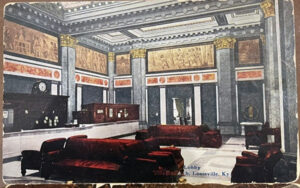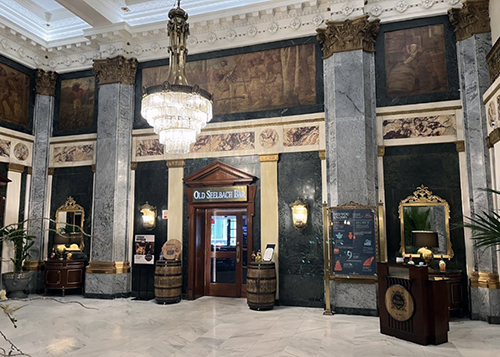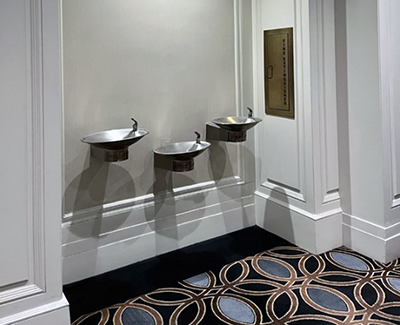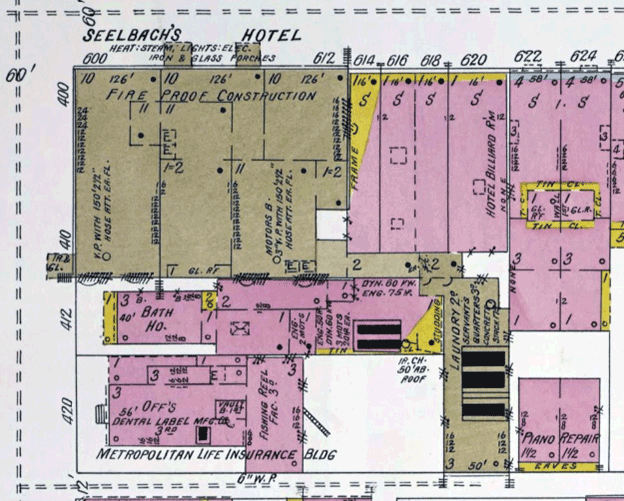As our city celebrates grand occasions from over a century ago, specifically the publication of The Great Gatsby and the opening of The Seelbach Hotel, the anniversaries inspired us to dig through the archives to see how Louisville Water fits into the stories.
Today, The Seelbach still welcomes guests with an opulent entrance, so you can probably imagine the luxurious atmosphere it exuded all the way back in 1905 when it opened on May 1, just days before the Kentucky Derby. Nearly 20 years later, the hotel helped set the scene in the pages of The Great Gatsby by F. Scott Fitzgerald.
The Great Gatsby at 100
Fitzgerald’s masterpiece, The Great Gatsby was published April 10, 1925. Portions of the novel are set in Louisville and the fictional Muhlbach Hotel which was influenced by The Seelbach Hotel.
Information found online shows Fitzgerald was stationed at Camp Zachary Taylor (in Louisville) in 1918 and frequented The Seelbach. It is reported that Fitzgerald was thrown out of the USO, using the Rathskeller at the hotel, three times in four months.
There are not many mentions of water in the novel and none about drinking water. It seems as if everyone’s favorite beverage was alcoholic with ice cooling their Juleps and bourbons
Seebach Hotel – Water Wows
Upon The Seelbach’s grand opening, The Courier-Journal ran several articles describing the modern design of the luxurious fireproof hotel made of steel and concrete. Among the amenities were a couple references to uses of water for the hotel’s patrons including bathtubs of the second floor that were “set in the walls and are marvels of luxury;” near the main staircase, there was a “drinking fountain of bronze and marble, which splashes cool water in the largest basin of Rookwood ever burned.”
*Based in Cincinnati, the first Rookwood Pottery created now highly collectible art pottery that was decorative and useful. It operated from 1880-1967.




Where did the Seelbach get its water?
In 1904, The Seelbach asked Louisville Water’s board for a five-inch service connection. Chief Engineer Charles Hermany reported to the board that a five-inch wrought iron pipe was available, but there were no five-inch meters. He suggested that using a four-inch meter with the five-inch pipe “would probably fully meet the requirements of the Hotel Company.” This was four years before the availability of filtered water.
Larry Johnson, the Seelbach’s historian and master concierge, said the hotel originally had two wells that could have provided clearer water for drinking, cooking, and bathing purposes.
Four months after asking for a water service, The Seelbach ran a classified advertisement looking to hire two first-class plumbers to be paid $3.50 for a nine-hour workday.

